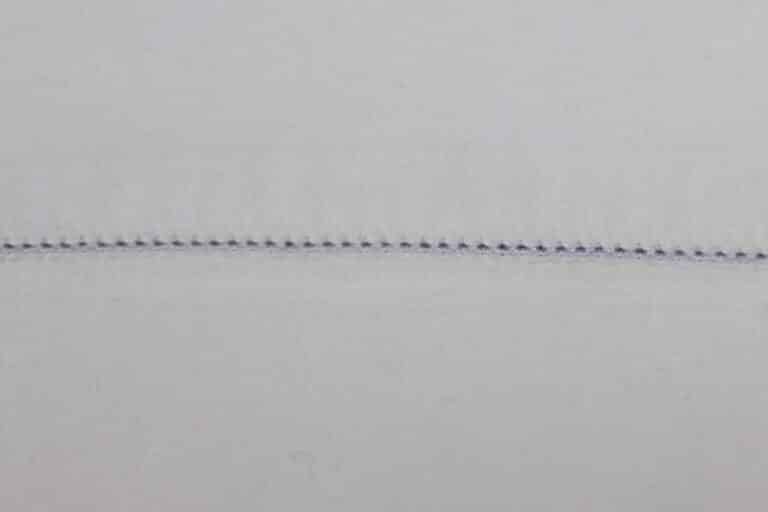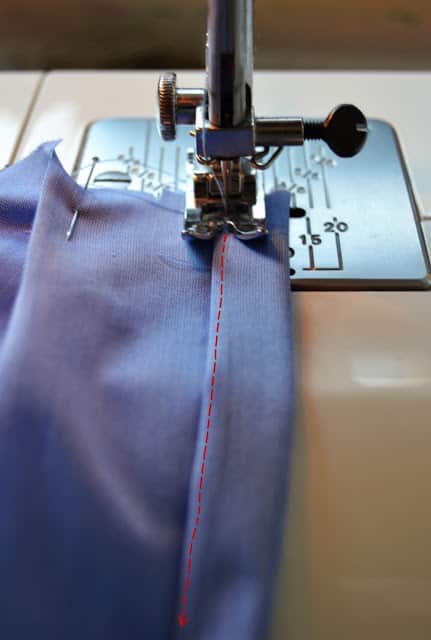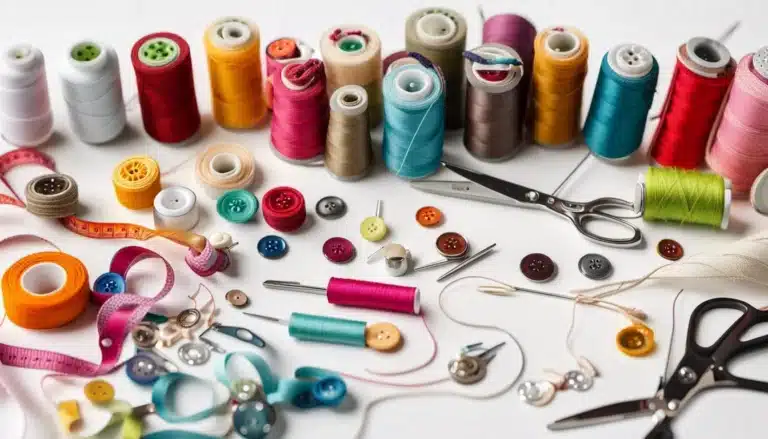Why and How to Learn to Hand Sew Your Clothes: Essential Skills Everyone Should Try
You might picture hand sewing as something reserved for historical costumes or old movies. But honestly, hand sewing has a lot to offer in everyday life, whether you’re making or fixing your own clothes. It’s not about giving up comfort or getting lost in layers—it’s about making garments that fit your style and needs, modern and simple.
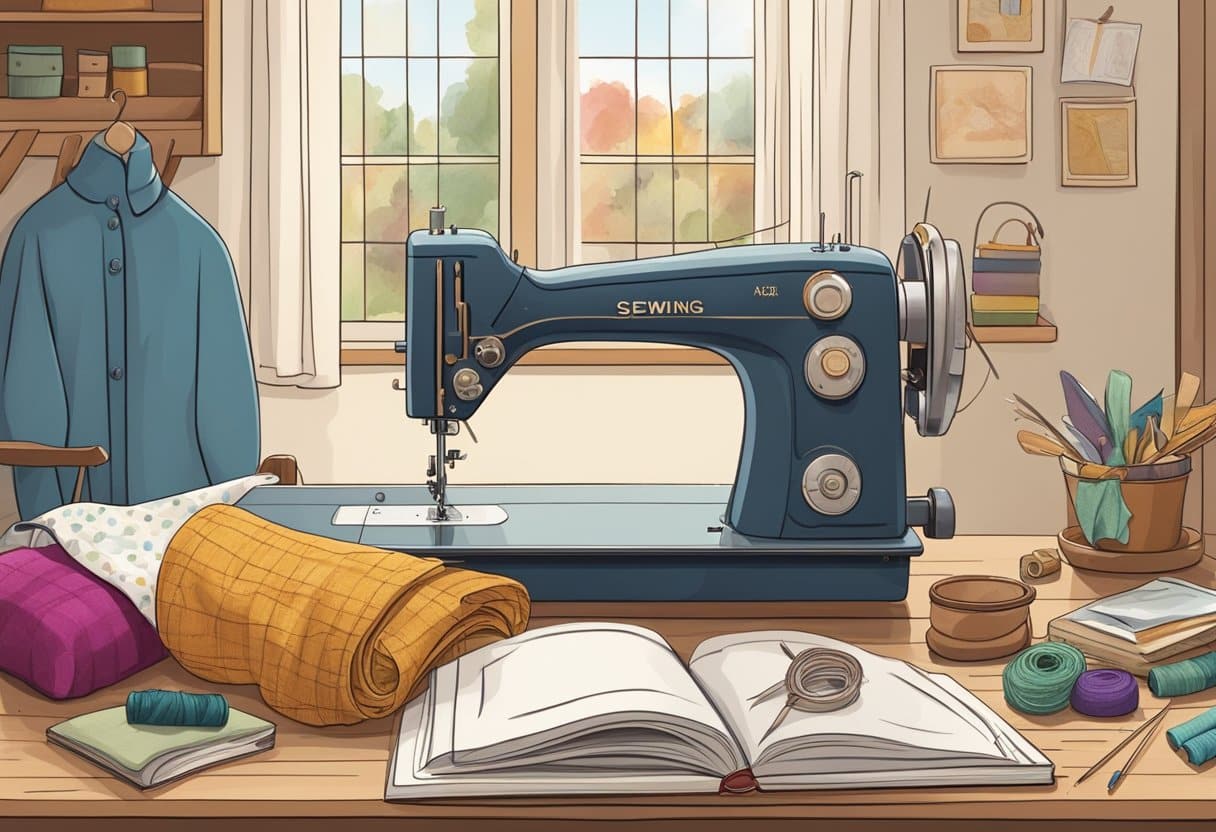
There are so many ways to get started with hand sewing, and you definitely don’t have to be a history buff to enjoy it. With helpful resources and a bit of curiosity, you’ll see just how practical and satisfying this skill can be. Anyone can pick it up—whether you’re just starting out at home or dusting off what you learned years ago.
Table of Contents
- 1 Hand sewing fits the needs of today’s makers, and here’s why:
- 1.1 The Personal Benefits of Hand Sewing
- 1.2 Essential Hand Sewing Techniques
- 1.3 Hand Sewing Encourages Sustainable Choices
- 1.4 Bringing Flexibility to Your Sewing Practice
- 1.5 A Meditative Craft for a Busy Life
- 1.6 More Meaning, Less Pressure
- 1.7 Practical Uses for Hand Sewing Every Day
- 1.8 Which Projects to Try by Hand
- 2 Helpful Tools and Guides for Learning Hand Sewing for Clothing
- 3 Frequently Asked Questions
- 3.1 What are the most helpful hand sewing skills for beginners repairing and making clothes?
- 3.2 Which hand stitch provides the strongest hold for homemade garments?
- 3.3 Where can you look for beginner-friendly hand sewing patterns?
- 3.4 What should you consider when picking fabric for hand-sewn clothing?
- 3.5 Which hand sewing projects help you build your skills the fastest?
- 3.6 What are the basic hand sewing tools every beginner should have to repair or sew clothes?
Key Takeaways
- Hand sewing works for modern, comfy clothing.
- You’ll find plenty of easy resources to help you learn.
- You don’t need to care about historical sewing to get the benefits.
Hand sewing fits the needs of today’s makers, and here’s why:
Hand sewing lets you slow down and pay attention to the details. In a world that moves fast, this is a rare treat. When you sew by hand, you pause and notice each step, making choices that matter with every stitch.
Why should you consider sewing by hand?
Hand stitches let you bring your craft anywhere. You don’t need to sit at a machine or stay in one room. Take your project outside, to a coffee shop, or just to your favorite chair. This kind of flexibility makes sewing relaxing, even meditative—kind of like knitting or crocheting. Many people say hand sewing calms them down and helps them focus.
The Personal Benefits of Hand Sewing
Hand sewing stitches connect you to your project in a real, tactile way. You feel the fabric, watch it change under your fingers, and get a sense of satisfaction as you work.
The finished piece often feels more special. That skirt you spent evenings making? It’s not just another item—it’s a reminder of your time and care. Hand-sewn clothes often stand out because of their unique details and the effort behind them.
Essential Hand Sewing Techniques
There’s real value in learning a few basic hand stitches. The running stitch, backstitch, whip stitch, and slip stitch form the backbone of most projects. They can be subtle or decorative, depending on what you want.
Here’s a quick table to help you remember what each stitch does best:
| Stitch Name | Use Case | Description |
|---|---|---|
| Running Stitch | Seaming, gathering, basting | Quick, simple, flexible |
| Backstitch | Strong seams, repairing | Secure, durable |
| Whip Stitch | Hemming, closing edges | Quick, neat finish |
| Slip Stitch | Invisible hems, linings | Hidden look |
Once you learn these hand sewing stitches, you unlock a bunch of useful techniques. There’s something empowering about being able to fix, alter, or create something new without needing a machine.
Hand Sewing Encourages Sustainable Choices
When you choose hand sewing, you usually end up making less but making better. You spend more time on each garment, which makes you pick better materials and think harder about what you really want to wear.
This approach leads to less waste and more care for the environment. Mending and upcycling get easier, too—you can patch, repair, or remake clothes and give them a second life.
Bringing Flexibility to Your Sewing Practice
If you switch between machine and hand sewing, you get the best of both worlds. Maybe you sew big seams on your machine, then use hand stitches for details or finishing touches. This lets you fit sewing into your life, even in short bursts—like during lunch or while waiting somewhere.
Try these practical sewing tips for mixing things up:
- Keep a small sewing kit in your bag for quick fixes.
- Use hand stitching for tricky spots that need precision, like collars or hems.
- Let your project rest if you need to—just pick it up again when you have time.
A Meditative Craft for a Busy Life
Hand sewing gives you a reason to slow down. You can take a break from screens and constant notifications. There’s something soothing about the repetitive motion, and some days, that’s exactly what you need.
If you don’t like to rush, this slower approach is a good fit. The focus is on doing things well instead of fast. It’s refreshing to enjoy making something without worrying about deadlines.
More Meaning, Less Pressure
Hand sewing invites you to create for the joy of it, not just to check things off a list. Making fewer things—on purpose—can feel a bit rebellious, but it makes every project mean more. Each garment, repair, or update you do by hand adds lasting value to your wardrobe and your sense of accomplishment.
There’s a special kind of pride in wearing clothes you made yourself. You know every seam, remember the time you spent, and the garment becomes a little badge of patience and creativity. Hand-sewn clothes often last longer, too, because you pay attention to every detail.
Practical Uses for Hand Sewing Every Day
Hand sewing isn’t just for clothes. You can use it to mend holes, adjust hems, patch bags, or even add your own touches to home linens. Small repairs keep clothes out of the trash, and little details—like embroidery or labels—turn regular things into keepsakes.
Some popular projects for hand sewing include:
- Sewing on buttons
- Mending rips and tears
- Hemming pants, skirts, or dresses invisibly
- Adding labels or tags
- Neat finishing on collars and sleeves
If you want to learn more, there are plenty of online guides and tutorials that cover hand sewing stitches in detail. Check out places like So Sew Easy for step-by-step instructions and inspiration.
Which Projects to Try by Hand
Start small—think patches, repairs, kids’ clothes, or simple accessories. Once you’re comfortable with sewing techniques like backstitch and slip stitch, try making a shirt or dress. It takes time, but the results are unique and satisfying.
Mixing machine and hand sewing helps you balance speed, fun, and learning. Hand sewing fits into your day whenever you have a moment, so you can keep creating without pressure.
Helpful Tools and Guides for Learning Hand Sewing for Clothing
If you’re ready to start hand sewing clothes, there’s no shortage of resources. Grab a guidebook that covers the basics, with clear pictures and easy explanations of stitches like the running stitch, backstitch, hem stitch, and blanket stitch. Good books show you how to use each stitch in real projects, like making an apron or a classic a-line skirt.
If you like learning by watching, check out online classes led by experienced dressmakers and milliners. These courses break down each step and let you practice at your own pace. You can even find private lessons online if you want more feedback. Podcasts with seasoned sewists can also be helpful—they share tips on picking the right sewing needles, thread, and fabric shears.
For a more hands-on start, look for beginner kits that include everything you need for a simple project like a tote bag or garment. You can also find e-books and online shops with supplies, specialty threads, and instructions for all levels. Online forums and stitch directories are great for extra help or advice.
Need visuals? Explore step-by-step tutorials with detailed tips, like this beginner’s guide to essential sewing techniques.
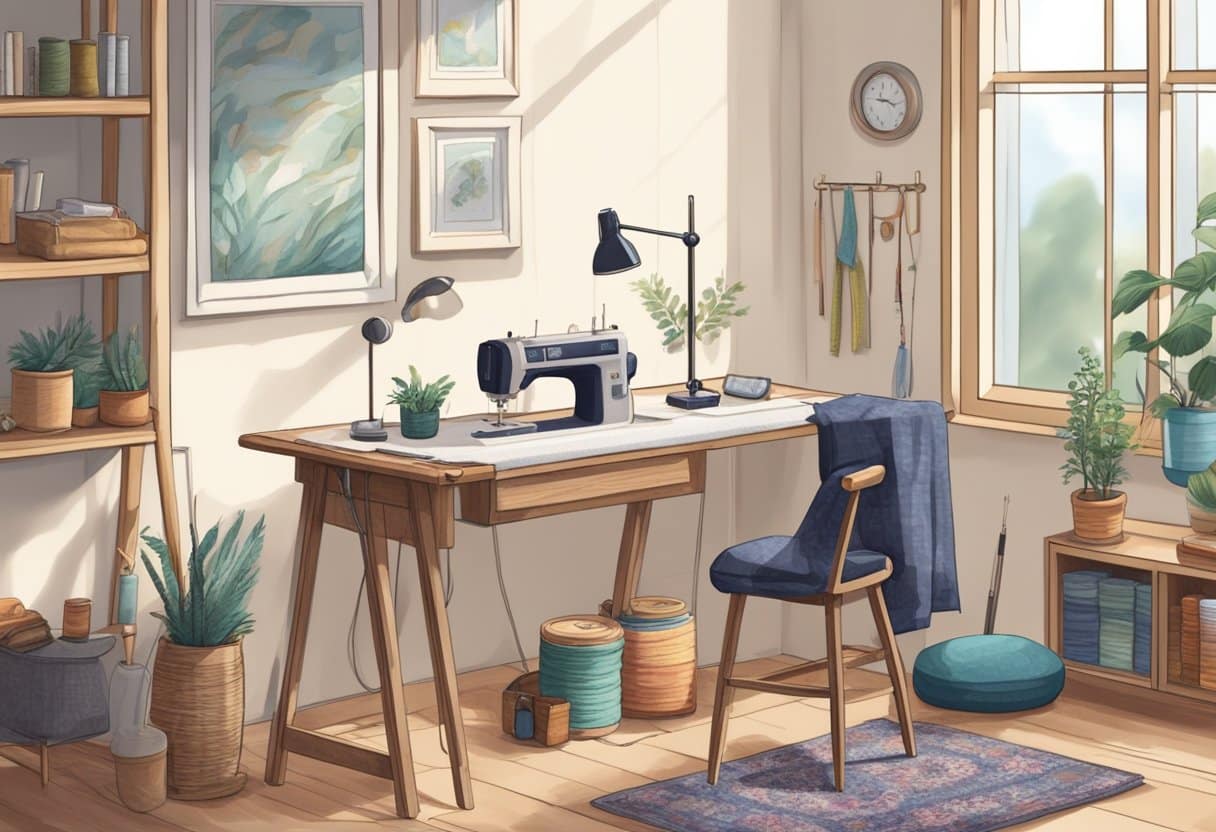
Frequently Asked Questions
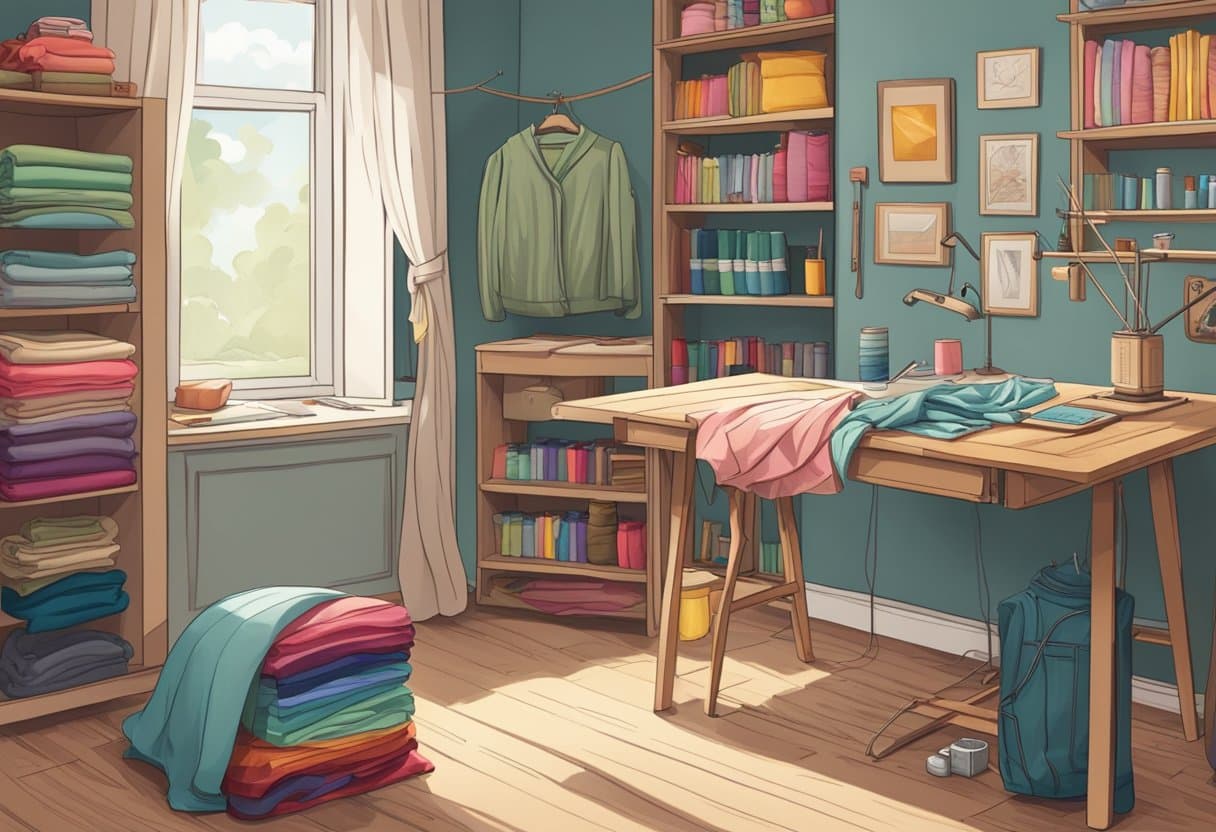
What are the most helpful hand sewing skills for beginners repairing and making clothes?
If you’re just starting out, focus on techniques you’ll use over and over. Practice threading a needle, tying knots, and making even stitches. Learn the running stitch for seams, the backstitch for stronger joins, and the slip stitch for invisible hems. With these basics, you can handle most repairs and small projects.
Which hand stitch provides the strongest hold for homemade garments?
If you want durability, the backstitch is your best friend. It creates a neat, sturdy seam that stands up to washing and wear. Use it for side seams and armholes—anywhere your clothes get the most use.
Where can you look for beginner-friendly hand sewing patterns?
Lots of places online offer patterns for beginners. Check out easy project guides and templates, blog tutorials, or YouTube videos—like How to Start Sewing. Many makers share printable patterns you can try as you learn.
What should you consider when picking fabric for hand-sewn clothing?
Go for natural fibers like cotton or linen—they’re easy to handle and forgiving for beginners. Avoid slippery or thick fabrics at first; lighter weights make stitching easier and your first projects neater.
Which hand sewing projects help you build your skills the fastest?
Start with simple things like pillowcases, tote bags, or basic skirts. These projects have straight seams and few pieces, so you can practice without getting overwhelmed. As you get more confident, try simple tops or alter thrifted clothes for a custom fit.
What are the basic hand sewing tools every beginner should have to repair or sew clothes?
A solid beginner’s kit includes:
- Sharp hand-sewing needles in a few sizes
- Sturdy thread in basic colors
- Small, sharp scissors for trimming
- Pins or clips to hold fabric
- Measuring tape for sizing
- Marking tools like fabric chalk or washable pen
- A thimble to protect your finger
These basics make sewing easier and your results neater.


